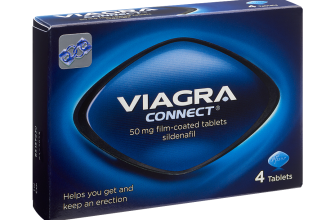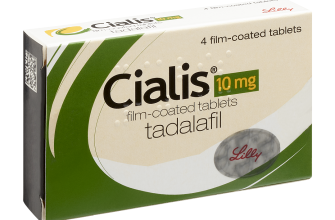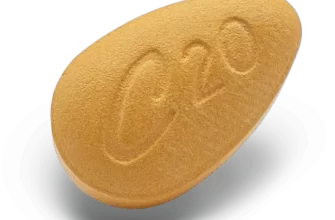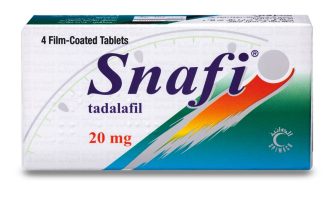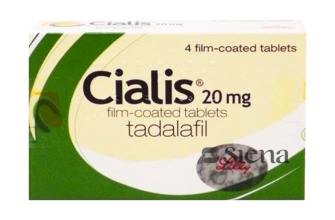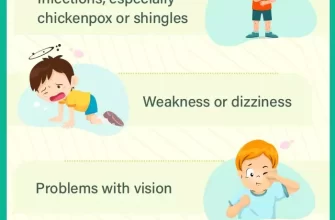Follow a structured plan for a 7-day prednisone treatment to manage your symptoms effectively. Start with a higher dose, typically 40 mg daily, tailored to your specific condition, under your doctor’s supervision. Keep track of your progress daily, noting any side effects or changes in symptoms. This proactive approach allows for timely adjustments if needed.
On days 1 to 3, monitor how your body reacts to the medication. Common effects might include increased energy or minor side effects like mood swings. Engage with your healthcare provider if you notice any unusual reactions, as they can offer personalized guidance.
From days 4 to 7, gradually taper the dosage if directed. A typical reduction could involve stepping down to 20 mg on day 4 and 10 mg on day 6, but always follow the instructions given by your healthcare professional. Staying hydrated and maintaining a balanced diet can enhance your recovery process during this period.
Post-treatment, schedule a follow-up appointment to discuss your experience and any lingering symptoms. This ensures that your treatment plan evolves with your health needs, leading to better long-term management.
- 7 Day Prednisone Treatment
- Understanding Prednisone and Its Uses
- Common Applications
- Dosage and Administration
- Dosage Guidelines for a 7 Day Course
- Week Breakdown
- Monitoring and Adjustments
- Potential Side Effects to Monitor
- Best Practices for Tapering Off Prednisone
- Monitor Symptoms
- Maintain a Healthy Lifestyle
- When to Contact Your Healthcare Provider
7 Day Prednisone Treatment
The 7-day prednisone treatment typically involves a tapering schedule to minimize side effects while effectively managing inflammation. Begin with a high dose on day one and gradually reduce the dosage each day. This approach helps your body adjust to lower steroid levels.
For instance, a common regimen may start with 40 mg on the first day, reducing by 10 mg each day thereafter, leading to a final dose of 10 mg on the seventh day. It’s crucial to follow your healthcare provider’s specific instructions, as individual needs can vary based on your condition.
| Day | Dose (mg) |
|---|---|
| 1 | 40 |
| 2 | 30 |
| 3 | 20 |
| 4 | 15 |
| 5 | 10 |
| 6 | 10 |
| 7 | 10 |
Stay vigilant for any side effects such as mood swings, increased appetite, or sleep disturbances. These can occur as your body adapts. If any severe reactions arise, contact your healthcare provider immediately.
Hydration is key during the treatment. Drink plenty of fluids to help your kidneys process the medication effectively. Maintaining a balanced diet can also support your overall well-being while on prednisone.
Regular follow-up appointments are important to assess your progress and adjust treatment if necessary. Keep track of any changes in symptoms to discuss with your doctor.
Understanding Prednisone and Its Uses
Prednisone treats various inflammatory and autoimmune conditions. It mimics the effects of cortisol, a natural hormone produced by the adrenal glands. This medication reduces inflammation, suppresses the immune system, and helps manage symptoms in conditions like asthma, arthritis, and lupus.
Common Applications
Doctors commonly prescribe prednisone for acute allergic reactions, skin diseases, and certain cancers. It can also manage symptoms in chronic conditions like multiple sclerosis and inflammatory bowel disease. The drug helps in controlling flare-ups and improving the overall quality of life for those affected.
Dosage and Administration
A typical 7-day prednisone treatment plan starts with a higher dose that gradually tapers off. This approach minimizes side effects and reduces the risk of adrenal insufficiency. Follow the prescribing physician’s instructions closely to ensure optimal outcomes and monitor any side effects that may arise.
Dosage Guidelines for a 7 Day Course
The standard dosage for a 7-day prednisone treatment typically begins with a higher dose, often around 40 to 60 mg per day. Adjustments depend on the specific condition being treated and the patient’s response. Always follow your healthcare provider’s instructions closely.
Week Breakdown
On day 1, take the full prescribed dose. For days 2 to 3, continue with the same dose unless redirected by your physician. On day 4, a possible taper might involve reducing the intake by 10 mg, bringing it to 30 mg. Days 5 to 7 may involve further reductions, depending on how well symptoms respond.
Monitoring and Adjustments
Monitor for side effects such as increased appetite, mood changes, or gastrointestinal issues. Consult your healthcare provider if experiencing severe reactions or if you feel the dosage needs adjustment. Regular follow-up ensures safety and effectiveness throughout the treatment.
Potential Side Effects to Monitor
Keep a close eye on specific side effects during a 7-day prednisone treatment. Monitoring these can lead to timely interventions if necessary.
- Increased appetite: Track any significant changes in hunger, as prednisone can stimulate cravings. Consider keeping a food diary to manage intake.
- Weight gain: Weigh yourself regularly. Gaining weight rapidly could indicate fluid retention. If you notice a sudden increase, consult your healthcare provider.
- Insomnia: Note any difficulties in sleeping. Prednisone can disrupt sleep patterns. Try relaxation techniques in the evening if you experience insomnia.
- GI issues: Watch for symptoms like nausea or stomach upset. Taking the medication with food may help mitigate these effects.
- Mood changes: Document any mood swings or feelings of anxiety. These can occur as a reaction to the medication.
- Increased blood sugar: Monitor your blood sugar levels, especially if you have diabetes or prediabetes, as prednisone can elevate glucose levels.
- Skin changes: Observe your skin for any rashes or unusual bruising. Such symptoms should be reported to a doctor.
Report any severe or alarming effects immediately. Engaging in open communication with your healthcare provider enhances safety during treatment.
Best Practices for Tapering Off Prednisone
Consult your healthcare provider to create a tailored tapering schedule. This plan should adjust the dosage gradually rather than stopping abruptly, minimizing withdrawal symptoms. Keep track of your daily dosage and any changes to maintain clarity and focus.
Monitor Symptoms
Carefully observe how your body responds during the tapering process. Document any side effects such as fatigue, mood changes, or joint pain. Regular follow-ups with your doctor can help address these symptoms and modify your tapering schedule if necessary.
Maintain a Healthy Lifestyle
Adopt a balanced diet rich in fruits, vegetables, and whole grains to support your body. Stay hydrated and incorporate light exercise, like walking or stretching, to promote well-being. Adequate sleep is also crucial for recovery and overall health.
When to Contact Your Healthcare Provider
Contact your healthcare provider if you experience any of the following symptoms during or after your 7-day prednisone treatment:
- Severe allergic reactions: Signs may include rash, itching, swelling, or difficulty breathing.
- Increased blood sugar levels: If you have diabetes, monitor your blood sugar closely, and inform your provider of any significant changes.
- Unusual mood or behavior changes: Report any significant shifts such as increased anxiety, depression, or agitation.
- Persistent stomach pain: Seek immediate attention if you experience severe abdominal discomfort or gastrointestinal bleeding.
- Frequent infections: Notify your provider if you notice signs of infection, such as fever, chills, or sore throat.
Also, reach out if you think the medication isn’t working. Discuss any side effects troubling you. Your healthcare provider can adjust your treatment plan for better results.
Regular follow-ups are important. Schedule an appointment if you have any concerns about your recovery or the medication’s impact on your health. Always keep communication lines open for your well-being.




